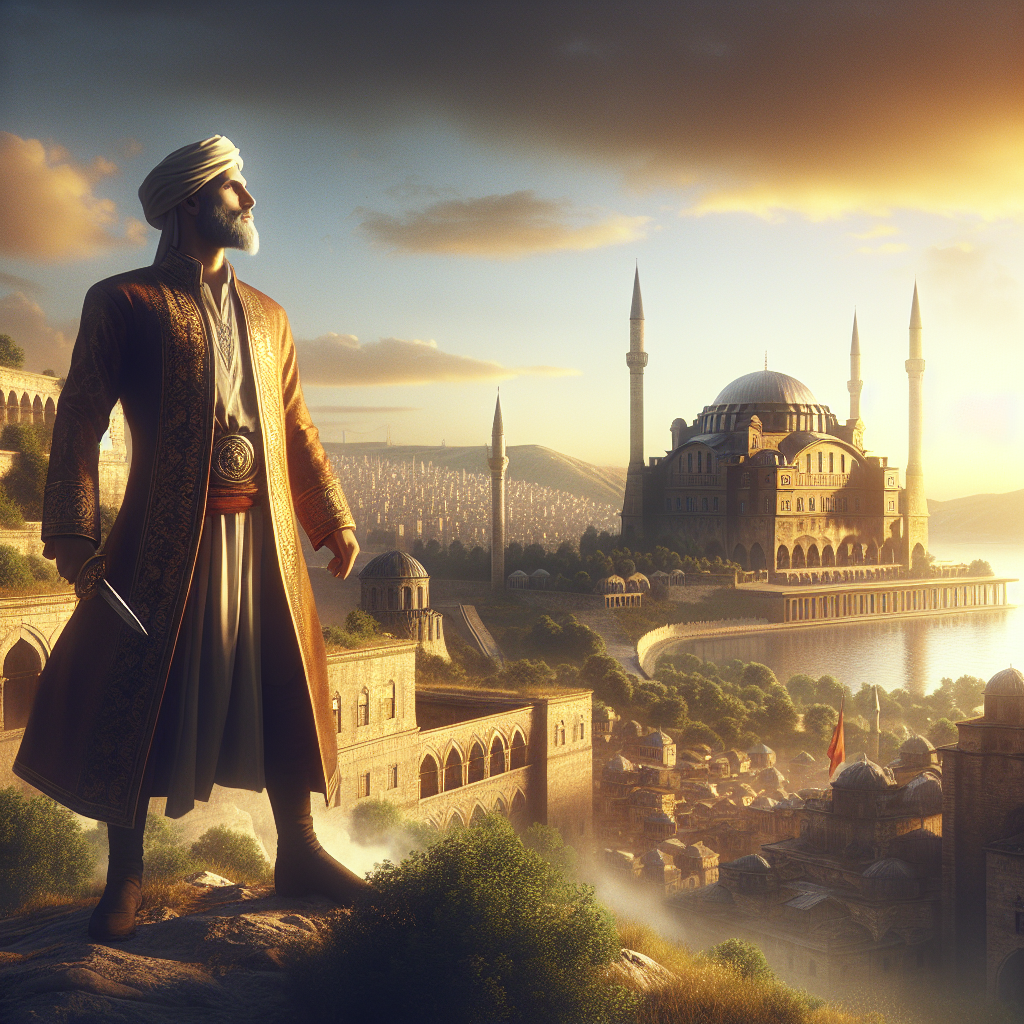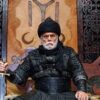Mehmed II, a name synonymous with grand conquests and strategic diplomacy, transformed the Ottoman Empire into a formidable power. Students exploring this pivotal era in history will find a rich tapestry of strategies that shaped not only the empire but also the course of world events. This blog post dives deep into Mehmed II’s adept use of war and peace, offering insights into his reign that are as relevant today as they were during his time.
Overview of Mehmed II’s Dual Approach to Governance
Mehmed II’s reign marked a significant period where military prowess and diplomatic finesse intertwined seamlessly. His dual approach to governance was characterized by swift conquests coupled with astute diplomatic maneuvers. Understanding these strategies helps illuminate the mechanisms that propelled the Ottoman Empire to its zenith. The blend of military and diplomatic methods not only expanded the empire but ensured its long-term stability.
This approach allowed Mehmed II to navigate the complexities of both regional power dynamics and international relations. By balancing these elements, he could exploit opportunities while mitigating threats. Whether through direct confrontation or subtle negotiation, Mehmed’s strategies exemplify how force and diplomacy can work in tandem to achieve political objectives.
Furthermore, students can gain perspective on the intricate balance of war and peace that leaders must maintain. This dual approach is a testament to the adaptability and foresight required to govern an empire in an era fraught with myriad challenges and shifting alliances.

Historical Context of Mehmed II’s Reign
During Mehmed II’s time, the geopolitical landscape was in a state of flux. The Byzantine Empire, once a bastion of power in the East, was in decline, creating a power vacuum that regional states eagerly sought to fill. This situation presented both threats and opportunities for the Ottomans. Mehmed’s rise to power came at a time when strategic decisions could alter the fate of nations.
The decline of the Byzantine Empire was not merely a backdrop but a catalyst for Mehmed II’s ambitions. It offered a unique opportunity to expand Ottoman influence over pivotal territories. Regional powers, including various Balkan states, were jostling for position amidst this instability, necessitating a keen strategic response from the Ottomans.
For students, understanding this context is crucial in grasping the reasons behind Mehmed II’s aggressive expansionist policies. The era was defined by shifting alliances, military campaigns, and the need for strong leadership to guide the empire through turbulent times.
War Strategies: The Conquest of Constantinople
The conquest of Constantinople in 1453 stands as one of Mehmed II’s most iconic achievements. This military campaign was a masterpiece of strategic planning and execution. The use of innovative artillery and siege technologies, such as massive cannons capable of breaching formidable walls, signified a new era in warfare.
Logistics played a critical role in this conquest. Mehmed II meticulously planned the siege, ensuring that his troops had the necessary supplies and support. Intelligence gathering and strategic deception also contributed to the success of the campaign, catching the defenders off guard and allowing the Ottoman forces to exploit weaknesses effectively.
For students analyzing this event, the siege of Constantinople is a case study in how technology, planning, and strategy can combine to achieve seemingly insurmountable goals. It marked a turning point in military history and set the stage for the Ottoman Empire’s dominance in the region.
Expansionist Policies: Campaigns in the Balkans
Following the fall of Constantinople, Mehmed II turned his attention to the Balkans. This region was strategically significant, with various states like Serbia and Bosnia posing potential threats to Ottoman dominance. Mehmed’s military campaigns in the Balkans were characterized by strategic brilliance and relentless pursuit of expansion.
Through a combination of military tactics and psychological warfare, Mehmed II subdued these regional powers. His ability to adapt tactics to different terrains and foes showcased his strategic acumen. These campaigns not only expanded the empire’s territory but also established Ottoman authority across the region.
Students studying these campaigns will find valuable lessons in the application of military strategy and the importance of adaptability in warfare. Mehmed II’s Balkan campaigns exemplify how decisive action and strategic thinking can consolidate power and secure an empire’s borders.
Diplomatic Efforts: Alliances and Treaties
Diplomacy was as crucial to Mehmed II’s success as his military exploits. He skillfully negotiated treaties and formed alliances that neutralized potential threats and secured Ottoman interests. These diplomatic efforts often involved complex negotiations and strategic marriages to forge political ties.
One notable aspect was Mehmed’s ability to recognize when diplomacy could achieve more than warfare. By establishing treaties with neighboring states, he avoided prolonged conflicts that could drain resources and weaken his forces. This strategic use of diplomacy allowed Mehmed II to focus on pressing military campaigns without the distraction of peripheral threats.
For students, Mehmed II’s diplomatic strategies underscore the importance of negotiation and alliance-building in statecraft. His ability to blend diplomacy with military power created a resilient and expansive empire that withstood external pressures and internal challenges.
Policies of Integration and Governance
Beyond conquest, Mehmed II implemented policies that fostered integration and stable governance in newly acquired territories. The millet system, which allowed religious and ethnic groups to maintain their traditions under Ottoman rule, was a key component of this strategy.
This system facilitated peaceful coexistence among diverse populations by granting autonomy in matters of religion and personal law. It also fostered loyalty to the Ottoman state by respecting local customs and leaders, thereby reducing the likelihood of rebellion.
For students, these policies provide insight into how empires manage diversity and maintain stability. Mehmed II’s approach demonstrates the effectiveness of inclusive governance and cultural respect in securing long-term loyalty and cohesion within an empire.
Crisis Management: Balancing War and Peace
Mehmed II faced numerous crises during his reign, from internal dissent to external threats. His ability to balance war and peace in managing these situations was crucial to maintaining stability. Whether through negotiation or military intervention, Mehmed adeptly navigated challenges to preserve his empire’s integrity.
Internal dissent was managed through a combination of diplomacy and force, ensuring that rebellious factions were either placated or decisively defeated. External threats were similarly addressed, with Mehmed deploying his forces strategically to counter incursions or leverage diplomacy to defuse tensions.
Students can learn from Mehmed II’s crisis management techniques, which highlight the need for flexibility and pragmatism in leadership. His strategies illustrate the delicate balance between force and negotiation required to maintain order and stability in a complex political landscape.
The Role of Religion in War and Diplomacy
Religion played a significant role in Mehmed II’s policies, influencing both war and diplomacy. Islam provided a framework for his actions, justifying military campaigns and establishing legitimacy. However, Mehmed skillfully balanced religious principles with pragmatic governance to maintain harmony in a diverse empire.
Religious rhetoric was often employed to rally support for military endeavors, framing them as holy wars against infidels. Yet, Mehmed recognized the importance of tolerance and incorporated diverse religious groups into the empire, fostering unity and legitimacy.
For students, Mehmed II’s use of religion in statecraft offers a nuanced understanding of how religious principles can coexist with pragmatic governance. His policies demonstrate the potential for religion to unify and legitimize rule, even in a multi-ethnic empire.
Cultural Policies: Promoting Peace through Patronage
Mehmed II’s reign was marked by significant cultural and architectural patronage, promoting peace and unity through shared identity. He commissioned the construction of mosques, educational institutions, and public works, fostering loyalty and cultural cohesion.
These projects not only enhanced the empire’s infrastructure but also underscored its cultural grandeur. Mehmed’s support for scholars and artists contributed to a flourishing of knowledge and arts, enhancing the Ottoman Empire’s reputation both internally and externally.
Students can appreciate the role of cultural patronage in fostering unity and stability. Mehmed II’s initiatives highlight the power of culture as a tool for promoting peace and identity within a diverse empire.
Legacy of Mehmed II’s Strategies
Mehmed II’s strategies left an indelible mark on the Ottoman Empire and its approach to governance. His balance of military conquest and diplomacy set a precedent for future rulers, guiding the empire through subsequent centuries of expansion and consolidation.
Mehmed’s legacy is one of adaptability, innovation, and vision. His strategies offer enduring lessons in statecraft, emphasizing the importance of integrating diverse elements into a cohesive whole. The principles he established continued to shape the Ottoman approach to governance, warfare, and diplomacy long after his reign.
For students, Mehmed II’s legacy underscores the value of strategic thinking and adaptability in leadership. His strategies serve as a testament to the enduring power of a balanced approach to governance.
Conclusion
Mehmed II’s dual policies of war and peace were instrumental in establishing a powerful and stable Ottoman Empire. His strategies offer valuable insights into the art of governance and the delicate balance required to maintain an empire. By examining his reign, students can gain a deeper understanding of the complexities of leadership and the enduring impact of strategic decision-making.
In summary, Mehmed II’s legacy serves as a guide for future leaders, illustrating the importance of adaptability, innovation, and vision in navigating the challenges of governance. His strategies continue to inspire and inform discussions on leadership and statecraft, offering timeless lessons for those seeking to understand the dynamics of power, diplomacy, and expansion.







